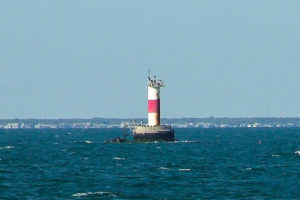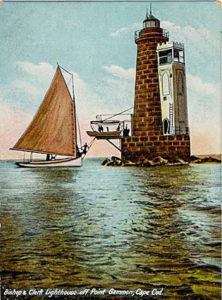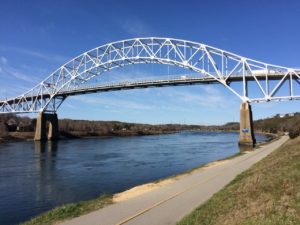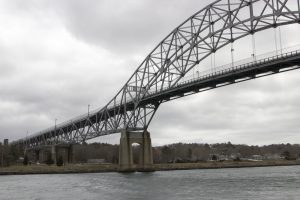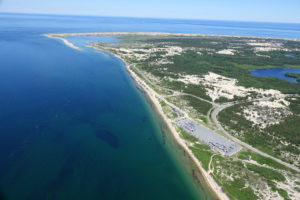Nantucket Sound is a body of water bordered by the islands of Martha’s Vineyard and Nantucket and also the southern coast of Cape Cod. It is more than 570 square miles in size, is relatively shallow and has some hazardous rocky coastlines. It is due to these factors, plus the fact that it is a busy route for vessels, that Nantucket Sound is home to seven currently active lighthouses and still contains the deactivated towers of two others. These beacons help to guide ships safely into their respective ports. However, did you know that in addition to lighthouses which adorn the coastline that at one time there was another beacon located several miles out in the sound?
At the southern tip of Great Island in West Yarmouth stands the deactivated Point Gammon Lighthouse. It was put in place in 1816 to help guide vessels safely around the dangerous boulders located in the waters offshore. Despite the new lighthouse there were still numerous shipwrecks in the decades which followed. This was due in part to the fact that the lantern at Point Gammon was not powerful enough to be seen far out in the sound and also to a pair of rock ledges located approximately three miles off of Great Island. Legend has it that there once was an island five-miles in circumference which stood in Nantucket Sound, covered in green grass during the summer, that over time eroded away leaving only the rock ledges behind. Bishop Ledge, the larger, and Clerks Ledge, the smaller, were continuing to wreak havoc on shipping lanes between the Cape and Islands.
Initially a lightship was stationed just west of the ledges before it was decided in 1856 to build a lighthouse in the location. $20,000 was put aside by Congress for a tower. The sixty-eight-foot Bishop and Clerks Lighthouse would be constructed in the image of Minot’s Ledge Lighthouse located off the coast of Cohasset which opened in 1855. The stone tower would be illuminated for the first time in October 1858, though it would not be fully completed until early the following year. Point Gammon Lighthouse initially had its lantern reduced in power to help mariners distinguish it from the new lighthouse before finally being deactivated all together.
The first lighthouse keeper would be John Peak whose father Samuel was ironically keeper at Point Gammon forty years earlier. Though reducing them, the new lighthouse did not completely put an end to the shipwrecks in the vicinity. A large unknown vessel was lost in the area around Bishop and Clerks during a raging storm in April 1879 and another well publicized wreck occurred in January 1881.
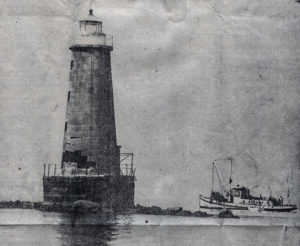
This photo is of Bishop and Clerks Lighthouse in the early 1950’s, not too long before it was destroyed. Courtesy of Bass River Yacht Club/Ralph M. Lincoln Collection.
Bishop and Clerks Lighthouse would stand stoically three miles off the Cape Cod coast for decades, well into the 20th century. However, the merciless ocean would begin to take its toll on the stone beacon. Constant battering from waves began to knock stones from the base of the tower, as well as began to tip the tower slowly to the left. As it became more dangerous the lighthouse was automated in 1923 before being deactivated in 1928. By early 1952 it had become apparent that the lighthouse was now a liability at risk of collapse. Repairing the beacon was deemed to be far too expensive and it was determined that Bishop and Clerks Lighthouse should be removed.
In September 1952 two hundred pounds of dynamite was strategically loaded into the deteriorating shell of the lighthouse. The hope was that the blast would not lunch debris very far and that some of the material could be salvaged. Bishop and Clerks Lighthouse was blown up under the watchful eye of the Coast Guard leaving a pile of rubble and part of the doorway on its platform. The beacon would be replaced by a simple red and white striped buoy along with several other buoys in the vicinity of the rock ledges as a warning.
By Christopher Setterlund




